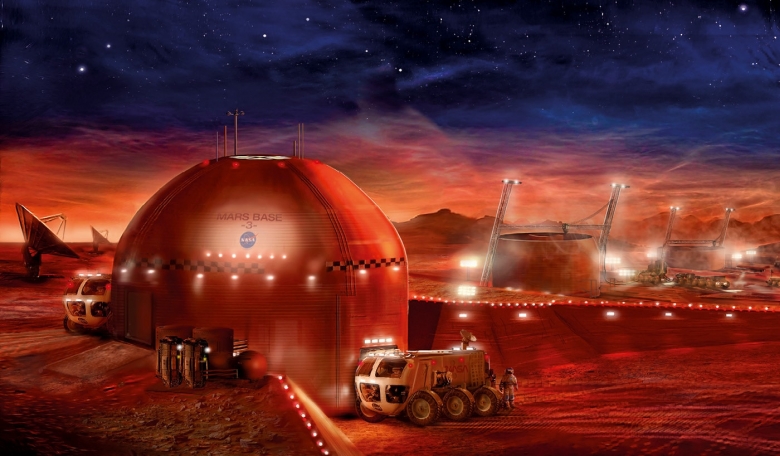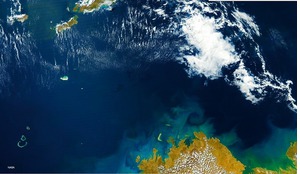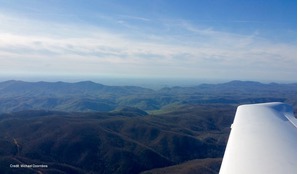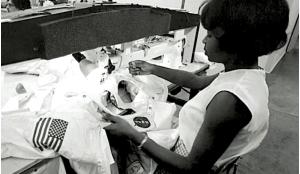The motivation to settle space - not just to build temporary outposts but self-sustaining colonies - comes from the notion that our long-term survival may depend on being a multiplanetary species. Yet, to date, most of the focus has been on how to reach suitable places like Mars and how to build the infrastructure needed to sustain human life there. These are necessary and important first steps toward space settlement, but we must also consider how living on planets with dramatically different environments will affect generations of humans in the future. Evolutionary biologist Scott Solomon sees settling space as a familiar first step in a process that has played out thousands of times on Earth. The planets of our solar system are islands on a much larger scale and that means we can use what we know about evolution, as well as what we know about how space affects the human body, to make predictions about how humans would change by living on Mars.
For an evolutionary biologist, visiting the Galapagos Islands, the Pacific archipelago straddling the equator, famed for its large number of endemic species, is a pilgrimage of sorts. After all, it was Charles Darwin’s experiences in Galapagos that inspired him to develop his theory of evolution by natural selection, forever changing our understanding of the natural world and our place in it.
Visiting Galapagos as an undergraduate student to conduct field research on marine iguanas convinced me to pursue a career as an evolutionary biologist. While I didn’t fully appreciate the significance of these islands on that first visit 20 years ago, returning last year - as a university professor with a PhD in evolutionary biology - everything I saw took on a whole new meaning.
 Galapagos finches have evolved differently from island to island with beaks of different shapes and sizes to specialise in particular food types.
Galapagos finches have evolved differently from island to island with beaks of different shapes and sizes to specialise in particular food types.
Seeing the tortoises, iguanas, and finches reminded me of the clues that Darwin noted during his 1835 visit that helped him piece together the history of life on these islands. He saw that individual variations - from the shape of a finch’s beak or a tortoise’s carapace - could affect which animals live and pass on their traits to future generations. But Darwin’s insights went much further. He reasoned that the same processes that had given rise to the animals on the Galapagos Islands could also explain the origins of life elsewhere on the planet - including the origins of our own species - and he argued that those processes are never-ending.
Evolutionary biologists working in Galapagos in the 20th century confirmed Darwin’s suggestion that evolution is ongoing when they observed it in action. Distinguished scientists Peter and Rosemary Grant witnessed evolutionary changes in the beaks of Galapagos finches from just one year to the next in response to climatic changes. We now know that evolution is still operating today among all living things - including humans - and that it will continue to affect us as long as our species exists. In other words, evolution not only explains our past, but can also help us to predict our future.
Yet our own evolutionary future is at a crossroads. The decisions we make in the years to come will determine whether we continue on the evolutionary trajectory of the last few centuries - driven largely by populations mixing and becoming more homogeneous - or whether we chart a new path that could ultimately give rise to new species of humans. Among the most consequential of those decisions is whether we choose to remain confined to Earth or whether we develop long-term human settlements in space. People scattered across the solar system, much like the animals scattered across the Galapagos islands, could evolve into new types of humans.
 On islands dominated by tall cacti, the Galapagos tortoise evolved a carapace that folds upward in front to make space for its long, outstretched neck to reach the juicy cactus pads.
On islands dominated by tall cacti, the Galapagos tortoise evolved a carapace that folds upward in front to make space for its long, outstretched neck to reach the juicy cactus pads.
Settling space
If we have the ability to improve the quality of life for people living on Mars by, for instance, tweaking the genome to make bones less brittle in lower gravity, is it unethical to do so?
I see settling space as a familiar first step in a process that has played out thousands of times on Earth. Animals arriving on an island become isolated from other members of their species. Over generations, they adapt to the local conditions through a combination of mutation and natural selection. The Galapagos finches that helped inspire Darwin evolved beaks with different shapes and sizes because each was useful for a particular type of food. Ground finches with large beaks could crush seeds, while cactus finches with slender beaks became specialised in eating insects and spiders.
The key factor that makes this process happen so readily on islands is isolation. Any changes that affect birds on one of the Galapagos islands won’t affect birds on the other islands. Over time, birds on each island gradually become different from one another as mutations randomly change their DNA and natural selection sorts through all that variation, acting like a sieve that allows those variants that are best suited to the current environment to be passed to the next generation. Over time, this combination of mutation and natural selection causes populations in each island to adapt to its particular environment.
Take the Galapagos tortoises, for example. On high islands with dense vegetation, the tortoises evolved dome-shaped carapaces and short necks. In contrast, on islands dominated by tall cacti, the tortoises evolved a carapace that folds upward in front to make space for its long, outstretched neck to reach the juicy cactus pads.
The planets in our solar system are islands on a much larger scale. People living for generations on Mars would be subject to the same evolutionary forces of mutation and natural selection as finches, tortoises, and other species on islands here on Earth. That means we can use what we know about evolution, as well as what we know about how space affects the human body, to make predictions about how humans would be changed by living on Mars.
Becoming Martian
In most ways, evolution on Mars will resemble evolution on Earth - mutation and natural selection will make people better adapted to local conditions over successive generations. But on Mars, adaptation is likely to happen faster than on Earth. The reason is that the rate of evolution is affected by two main factors, both of which are enhanced on Mars.
The first is the strength of natural selection, which refers to how big an advantage a particular trait provides. In Galapagos finches, having a beak that is able to crack open the large, hard seeds prevalent in a drought year could literally be the difference between life and death, so selection for beak size can be very strong. As the Grants’ work showed, any finch that happens to have a bigger beak in a drought year is much more likely to survive and pass on its genes for big beaks.
On Mars, any trait that makes people better equipped for the Martian environment would be heavily favoured by selection as well. One clear difference between Earth and Mars is that gravity on Mars is about 38 percent of that on Earth. Studies of astronauts in low Earth orbit have shown that prolonged exposure to lower gravity weakens bones. People on Mars will experience bone density loss as well, albeit at a slower rate. So, by the time a woman who is born on Mars is ready to have children of her own, her skeleton might not be able to endure the forces she’ll experience during childbirth. A fractured pelvis could be deadly for both mother and baby, so natural selection would strongly favour females who are born with denser bones so that they can afford to lose bone density as they age. Strong natural selection means that even over just a few generations people on Mars may evolve denser bones.
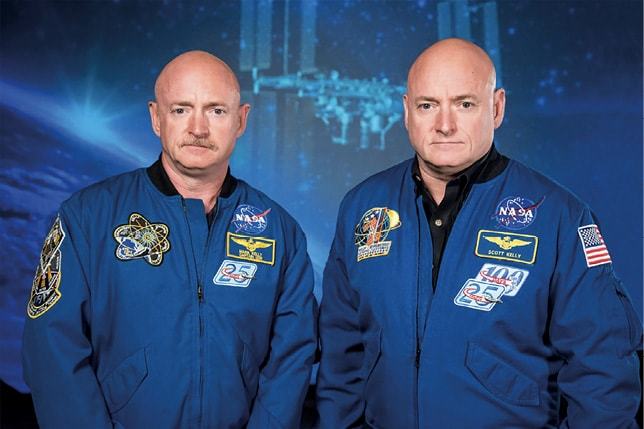 Twin astronauts, Scott and Mark Kelly were subjects of NASA’s Twins Study, looking at the effects of space travel on the human body. Scott (right) spent a year in space while Mark (left) stayed on Earth as a control subject.
Twin astronauts, Scott and Mark Kelly were subjects of NASA’s Twins Study, looking at the effects of space travel on the human body. Scott (right) spent a year in space while Mark (left) stayed on Earth as a control subject.
But selection can only make existing traits more or less common, it cannot create traits that do not yet exist. New traits must come into existence through mutation, the random change in the sequence of the DNA in our genomes that can happen any time cells divide. With more mutations, there is more variation available for natural selection to act on, and the faster evolution can occur.
Thanks to NASA’s Twin Study, we now have evidence that exposure to space radiation causes mutations. By comparing Astronaut Scott Kelly’s DNA before and after his one year on the International Space Station (ISS) - and also by comparing his DNA to that of his identical twin who remained on Earth - mutations were found in Scott Kelly’s DNA after his spaceflight that were not found beforehand; nor were they present in his twin’s DNA. Unlike some of the changes to an astronaut’s body that are reversed after returning to Earth, these genetic changes are permanent.
Almost all of what we know about how space affects the human body and mind comes from studies of healthy adults between about 30 and 50 years old
While astronauts on the ISS experience about 24 times the radiation exposure as people on Earth, the ISS is still somewhat protected from space radiation by the Earth’s magnetosphere. Mars has no magnetosphere and a very thin atmosphere, so galactic cosmic rays, solar particles, and ultraviolet radiation hit its surface at nearly full strength. All serious designs for Mars habitats include radiation shielding, but even a short amount of time spent on the surface - for farming, repairs, or exploration - would increase the radiation exposure.
This radiation exposure means that people living on Mars are likely to have much higher mutation rates than people on Earth. One consequence is likely to be increased cancer rates, but some mutations could lead to beneficial changes, such as denser bones. If such beneficial mutations occur in cells that produce sperm or eggs, they will be passed to children, making each generation better adapted than those that preceded it.
Another example of a helpful mutation could be new types of skin pigments that help protect the body from radiation. Here on Earth, the pigment eumelanin evolved to provide natural protection from ultraviolet radiation. People that settled low-lying regions near the equator, where the sunlight hits the Earth’s surface with the greatest intensity, evolved skin with greater amounts of eumelanin. Humans on Mars may gain even more eumelanin, making their skin darker, or they may develop new types of pigments. Some species on Earth use carotenoids, the pigments that give carrots their orange colour, as protection from radiation. Most animals, including humans, get carotenoids from their diets. But one insect, the pea aphid, has acquired the genes to make carotenoids itself and in optimal conditions it comes out orange. If a similar event happened on Mars, rather than the ‘little green men’ of science fiction, there might be orange-skinned Martians.
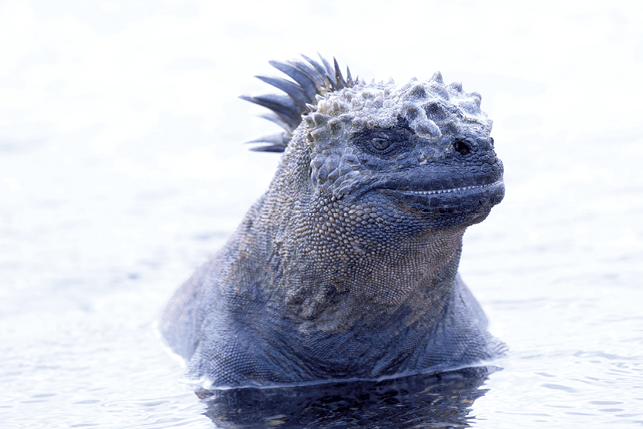 Marine iguanas have many adaptations for the life aquatic: flattened tails to help them swim, sharp teeth for scraping algae off volcanic rocks beneath the sea, and nasal glands to get rid of excess salt, yet they also share many characteristics with land iguanas.
Marine iguanas have many adaptations for the life aquatic: flattened tails to help them swim, sharp teeth for scraping algae off volcanic rocks beneath the sea, and nasal glands to get rid of excess salt, yet they also share many characteristics with land iguanas.
Ethical considerations
Evolutionary changes will be an inevitable part of creating any long-term settlement on Mars or elsewhere in space. But natural selection is a messy, somewhat unpredictable process. The technology now exists to take control of our future evolution through so-called CRISPR-Cas9 gene editing. The safety and ethics of editing the genomes of future humans are currently being debated. But in a future scenario in which people are living in hazardous conditions beyond Earth, the ethical considerations become more complex. If we have the ability to improve the quality of life for people living on Mars by, for instance, tweaking the genome to make bones less brittle in lower gravity, is it unethical to do so? Or would we, in contrast, have a moral obligation to do what we can to keep people alive and healthy?
The ethics of having children on Mars is particularly challenging. A self-sustaining colony would necessarily require human reproduction, but life in a Martian colony will come with significant hazards and there are many questions for which we do not yet have answers. How safe are pregnancy and childbirth in 38 percent gravity? How do lower gravity and higher radiation exposure affect child development? Will children born on Mars be able to visit Earth or will their bones, muscles, and hearts be too weak to tolerate our stronger gravity? It is worth noting that almost all of what we know about how space affects the human body and mind comes from studies of healthy adults between about 30 and 50 years old.
We need answers to questions like these before we can responsibly begin planning for permanent human settlements beyond Earth. But as we speak, efforts are already underway to develop the rocket technologies needed to get people to Mars, habitats designed to keep them alive, and agricultural techniques to ensure they are well nourished. These are valuable efforts, but we should also be working on understanding the evolutionary consequences of becoming a multiplanetary species. We need to know how our descendants on other worlds will differ from us. Will settling space save our species from extinction, or will it—in an ironic twist—lead to new human species?
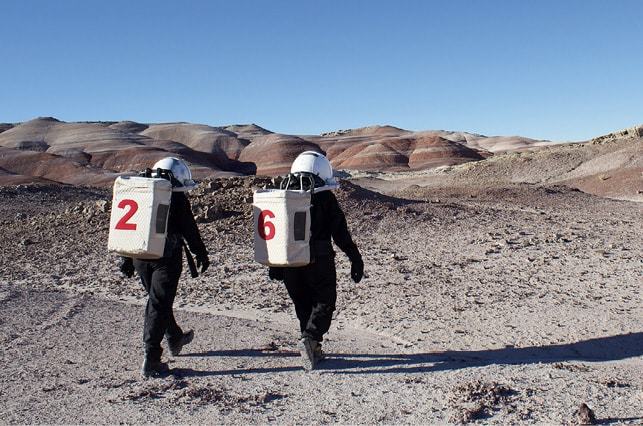 Scientists at the Mars Desert Research Station in Utah, preparing for a hypothetical manned mission to Mars, must don spacesuit simulators any time they leave the habitat where they live. Life in a Martian colony will come with significant hazards and there are many questions for which we do not yet have answers.
Scientists at the Mars Desert Research Station in Utah, preparing for a hypothetical manned mission to Mars, must don spacesuit simulators any time they leave the habitat where they live. Life in a Martian colony will come with significant hazards and there are many questions for which we do not yet have answers.
Unique island inhabitants
Mutation and natural selection will make people better adapted to local conditions over successive generations
There may be no better place to look for answers to these questions than among the unique animals of the Galapagos islands. I grinned widely behind my snorkel mask as I watched a marine iguana grazing on the seafloor. When Charles Darwin saw his very first marine iguana, he was so puzzled by the sight of a lizard swimming in the ocean that he captured one and hurled it out to sea, then watched in astonishment as it swam gracefully right back to him.
Darwin noted the many adaptations that marine iguanas have to the life aquatic: flattened tails to help them swim, sharp teeth for scraping algae off volcanic rocks beneath the sea, and nasal glands to get rid of excess salt. While not impressed by their beauty—he described them as “hideous”—they made a lasting impression on Darwin.
Yet it was not the uniqueness of the marine iguanas that most aroused Darwin’s curiosity, but their similarity to the green iguanas in mainland South America and to the land iguanas that also inhabit the Galapagos. The same was true of the finches, mockingbirds, and tortoises—each had relatives that lived in adjacent regions. Darwin realised that these species had come into existence because their ancestors had colonised the remote archipelago, become isolated, and evolved into new forms.
Unlike finches and iguanas, we humans have the ability to contemplate how our actions will affect future generations. We can’t be sure what traits or abilities our descendants on Mars will someday possess, but we can look at the unique inhabitants of islands like the Galapagos and recognise the inevitability of change that comes from generations of isolation in new environments.
About the author
Scott Solomon, PhD is a biologist and science communicator. He teaches ecology, evolutionary biology, and scientific communication as an Associate Teaching Professor in the Department of Biosciences at Rice University in Houston. His research examines the ecology and evolution of ants, microbes and humans. Dr Solomon often speaks at schools, museums, churches, science cafés, and other venues and has appeared on numerous radio and television programs. His TEDx talk on human evolution on Mars is available on TED.com and his lecture series What Darwin Didn’t Know: The Modern Science of Evolution is available through The Great Courses and Audible.com. His writing and photography have appeared in publications such as NBC News, Slate, Aeon, Nautilus, and Wired and his book, Future Humans: Inside the Science of Our Continuing Evolution, was published by Yale University Press.





